Cart

Two Weeks in Costa Rica
Costa Rica Travel Blog
Home > Things to Do > National Parks & Reserves
Costa Rica National Parks
One of the things that makes Costa Rica unique is the amount of protected land it holds. Beginning in the 1960s, Costa Rica started putting parcels of land aside for conservation to protect it from deforestation. Today, Costa Rica has dedicated an impressive 25% of its national territory to conservation. This includes over 160 protected areas, with 30+ national parks, 51 wildlife refuges, 13 forest reserves, 8 biological reserves, plus national monuments, wetlands, and other protected zones.
These protected spaces are located throughout the country and offer many different types of experiences. Some protect nesting sea turtles or offer spectacular wildlife viewing, while others showcase volcanoes and waterfalls.
Below, we’ll share some of our favorite national parks and reserves with links to more information. We have visited every one of them over our 10+ years living in Costa Rica. We’ll give parks with volcanoes, accessible options for families, challenging treks for hiking enthusiasts, and some off-the-beaten-path options as well.
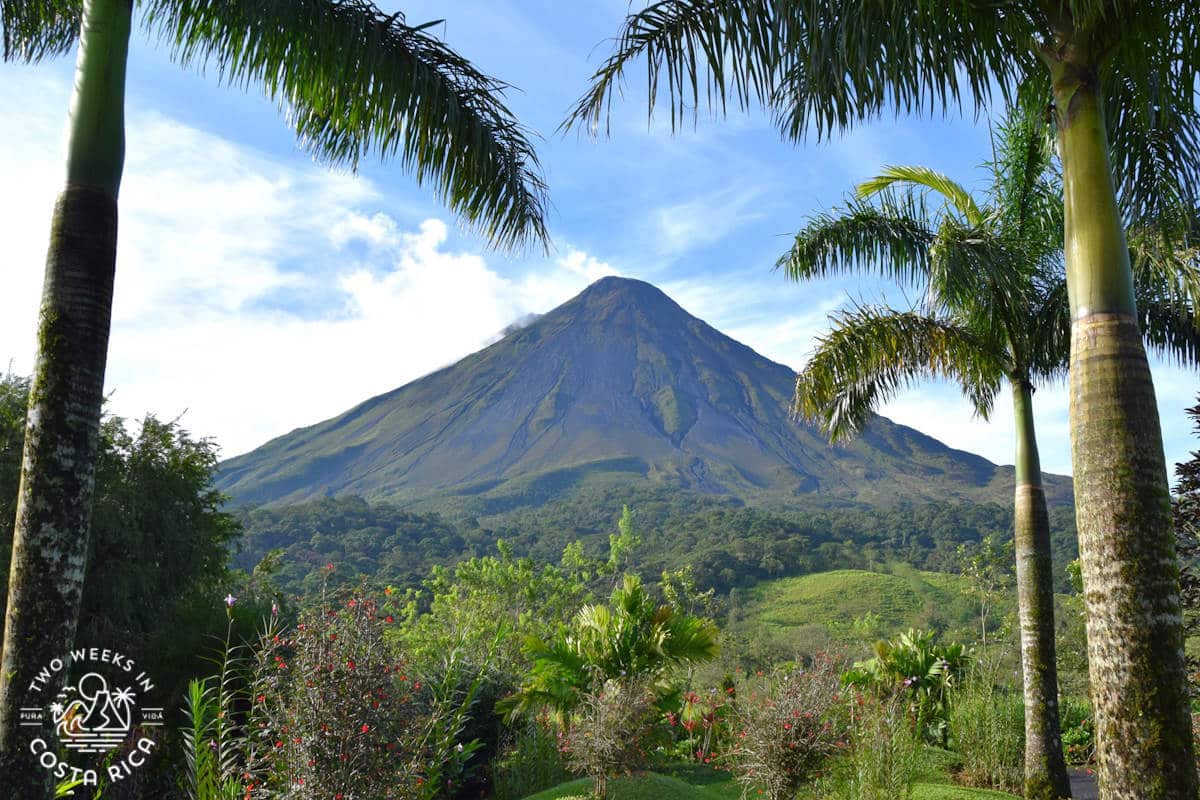
Here's What We'll Cover:
Costa Rica National Parks Map
Best National Parks in Costa Rica
Corcovado National Park
Known for: Amazing biodiversity & wildlife viewing
Visit from: Drake Bay or Puerto Jimenez
Best for: Off-the-beaten-path hiking. Trails vary in difficulty from moderate to very difficult.
While Corcovado may not be easy to get to, it is well worth the effort. This remote park located on the Osa Peninsula offers a chance to see raw, untouched rainforest and some of the country’s most exotic wildlife. Scarlet Macaws, Baird’s Tapir, and all four types of monkeys that live in Costa Rica can be discovered, and if you’re lucky, big cats too.
Corcovado has a large network of trails that span the peninsula, but most people visit just one ranger station as a day trip. From Drake Bay, you can take a boat to San Pedrillo or Sirena Ranger Stations. From Puerto Jimenez on the other side of the Osa, you can access La Leona or the newer El Tigre entrance, just north of town. Overnight stays are also possible. All visits to the park require a guide and prior reservations.
For more information, read our posts:
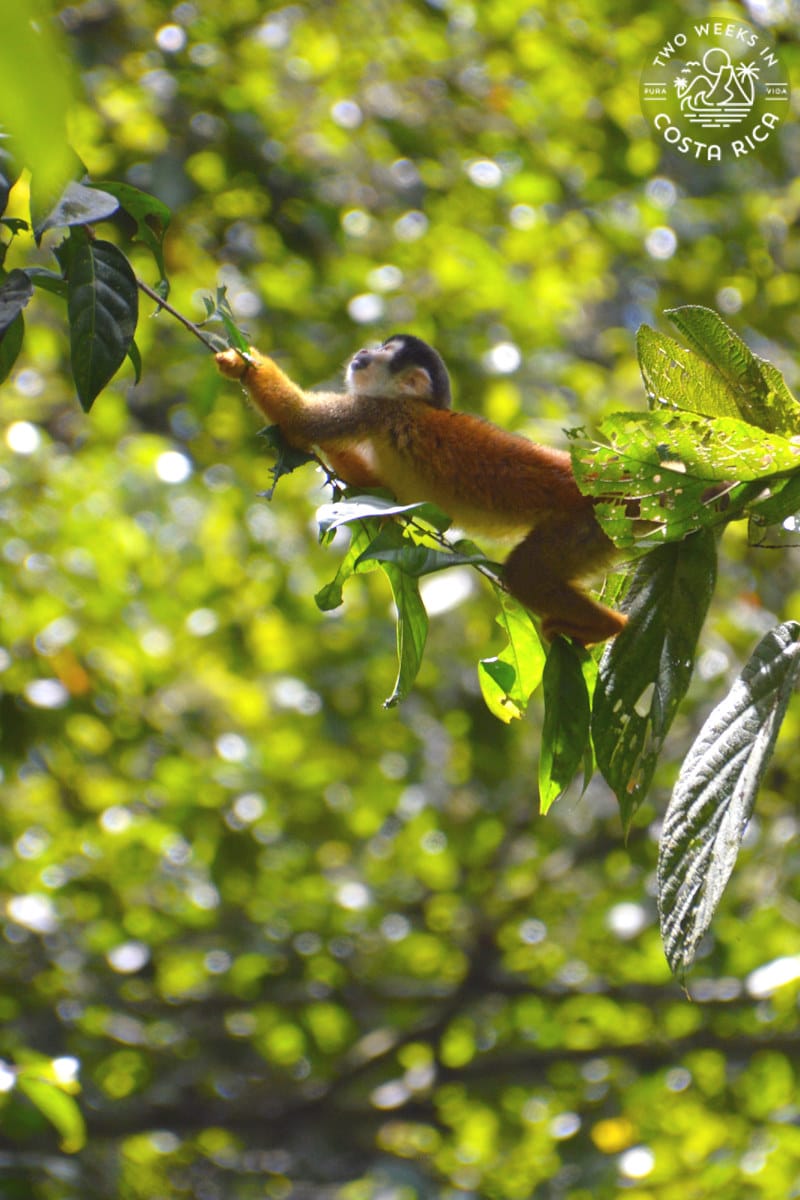
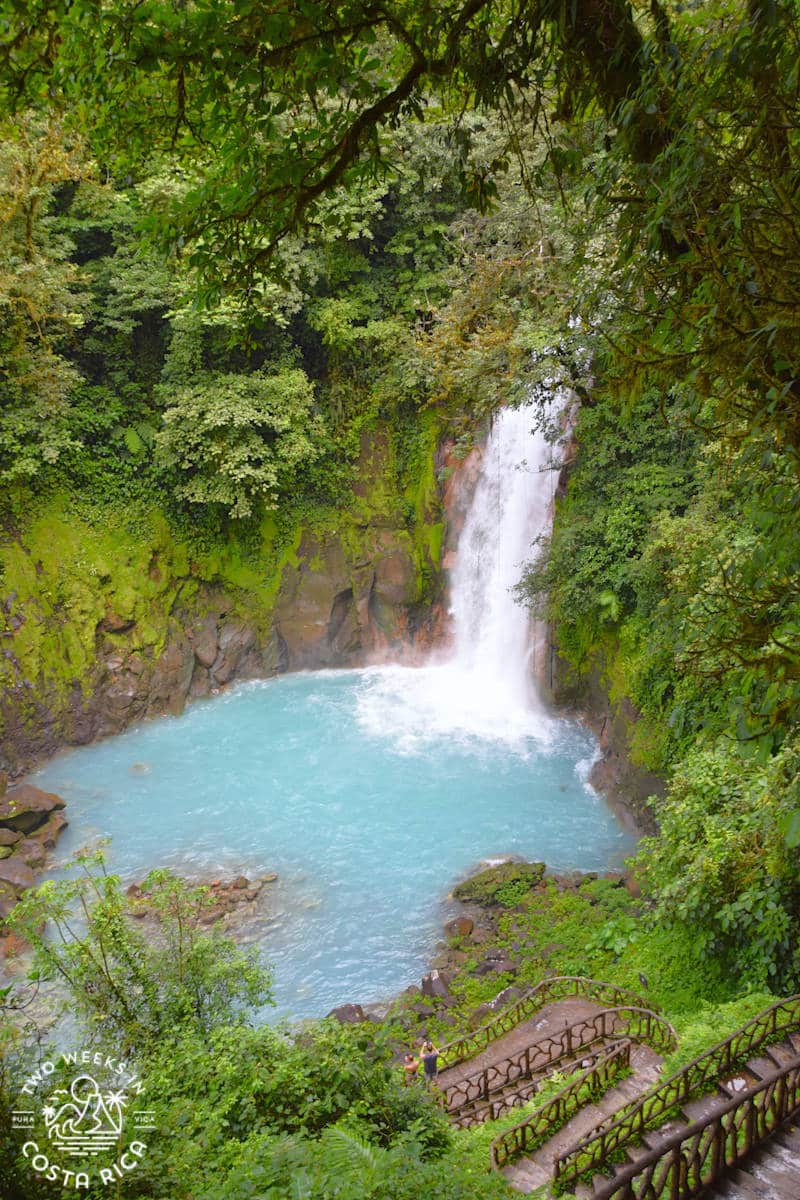
Tenorio Volcano National Park
Known for: The bright blue Rio Celeste Waterfall
Visit from: Bijagua, La Fortuna/Arenal, or Nuevo Arenal
Best for: Anyone up for a moderately difficult hike.
Tenorio Volcano National Park has become very popular in recent years as an off-the-beaten-path destination in Costa Rica. It is located in the rural northern part of the country, where tourism is just beginning to grow.
While the park has scenic trails that pass through lush primary rainforest and cloud forest, the Rio Celeste Waterfall is the focal point. Photos of this waterfall might have you wondering if the bright blue hue is real. It is—and to see it in person is unforgettable!
For more information, including the best times to visit to see the blue color, read our post Rio Celeste Essential Tips.
Manuel Antonio National Park
Known for: Easy wildlife viewing, especially monkeys
Visit from: Manuel Antonio/Quepos or Uvita/Dominical/Ojochal
Best for: Casual hiking. Good for families as trails are easier.
This popular park on the central Pacific coast offers easy access to the rainforest. It is located right in the busy tourist town of Manuel Antonio and has many different options for trails. You can see wildlife like sloths, lizards, and birds, but it is best known for its abundant, and very social, monkeys.
Manuel Antonio National Park also has a protected marine zone with three beautiful beaches, including a calm cove that is especially good for swimming.
For more information, including tips on how to avoid the crowds, read our post Manuel Antonio National Park.
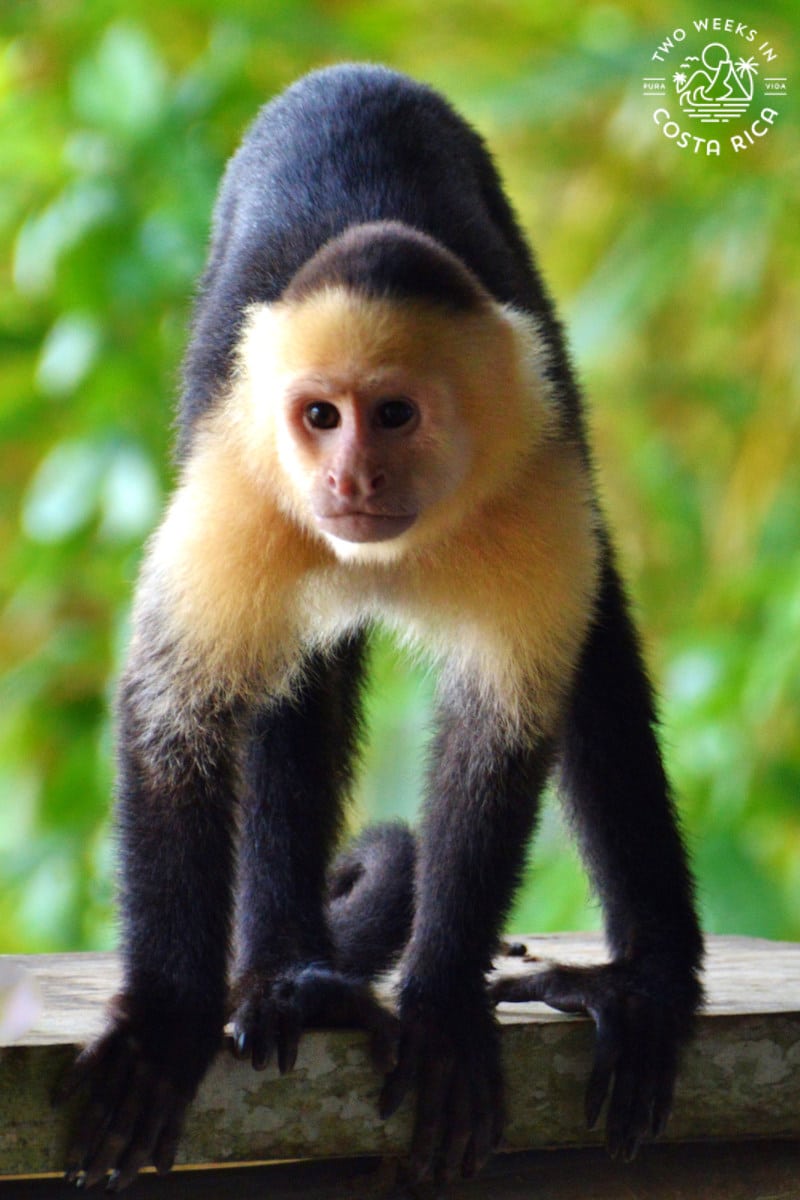
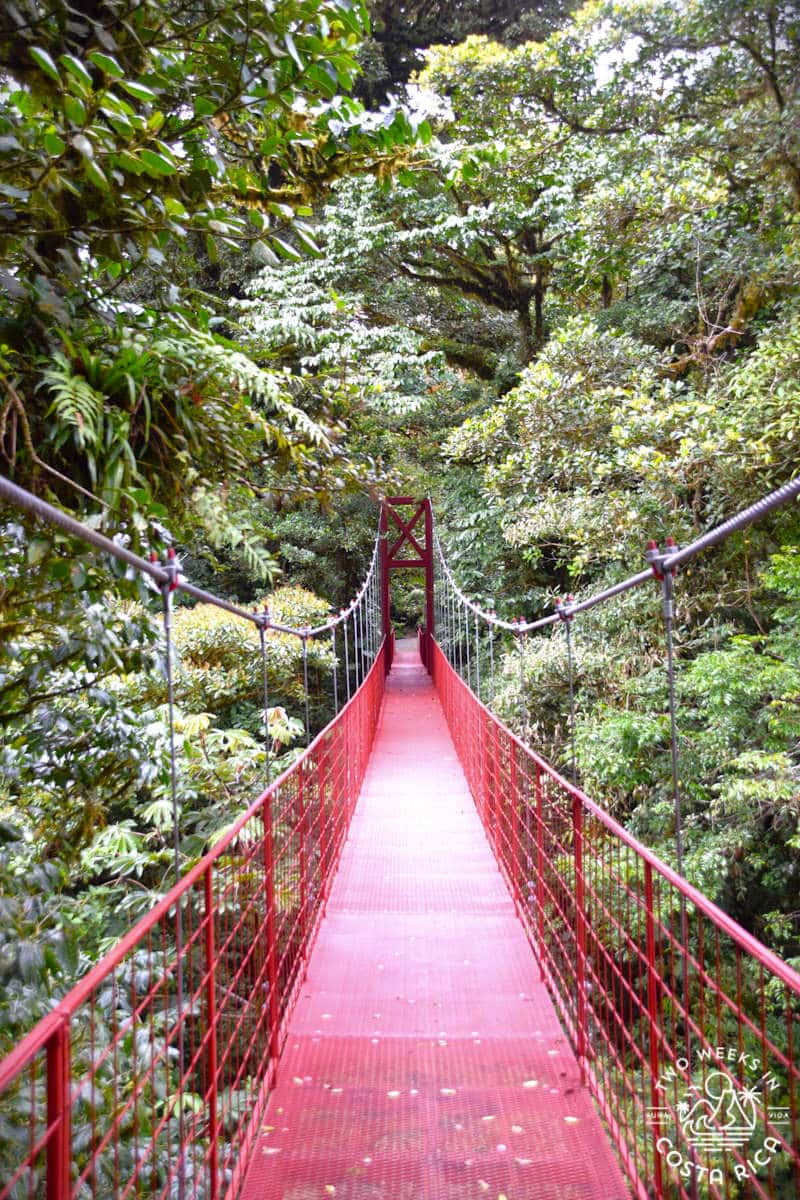
Monteverde Cloud Forest Reserve
Known for: Biologically rich cloud forest
Visit from: Monteverde
Best for: Those looking to experience the unique cloud forest environment. Trails vary in difficulty from easy to moderate.
Costa Rica has an extremely variable climate. You can be soaking up the sun at the beach one minute, and only a few hours later, be bundling up in the cool cloud forest.
The Monteverde Cloud Forest Reserve is one of the best places in Costa Rica to experience the biologically diverse cloud forest. Not only is this park noteworthy for its vast flora and fauna, the experience of walking through this type of environment alone is memorable. Thick moss covers nearly all the greenery, vines taper from treetops, and misty clouds come and go with the shifting winds.
For more information, including a description of the park’s trails, read our post The Famous Monteverde Cloud Forest Reserve.
Tortuguero National Park
Known for: Wildlife viewing and sea turtle nesting
Visit from: Tortuguero
Best for: Accessible wildlife viewing (by boat). Good for all ages and mobility levels.
Tortuguero National Park is unique in that it offers wildlife viewing by both land and water. The canals of the village are one of the best ways to see wildlife. By small boat or canoe, you meander along the edge of the dense mangrove and forest to sneak up on animals like spider monkeys, howler monkeys, white-faced monkeys, freshwater turtles, caiman, crocodiles, and green basilisk lizards, as well as many kinds of birds.
The park also encompasses protected beaches for nesting sea turtles. Tortuguero is one of the most important sea turtle nesting sites in the world, with four different kinds of turtles coming to its shores to lay eggs.
For more information, including the best times of year to see turtles, read our post Tortuguero National Park: A Wildlife Hot Spot.
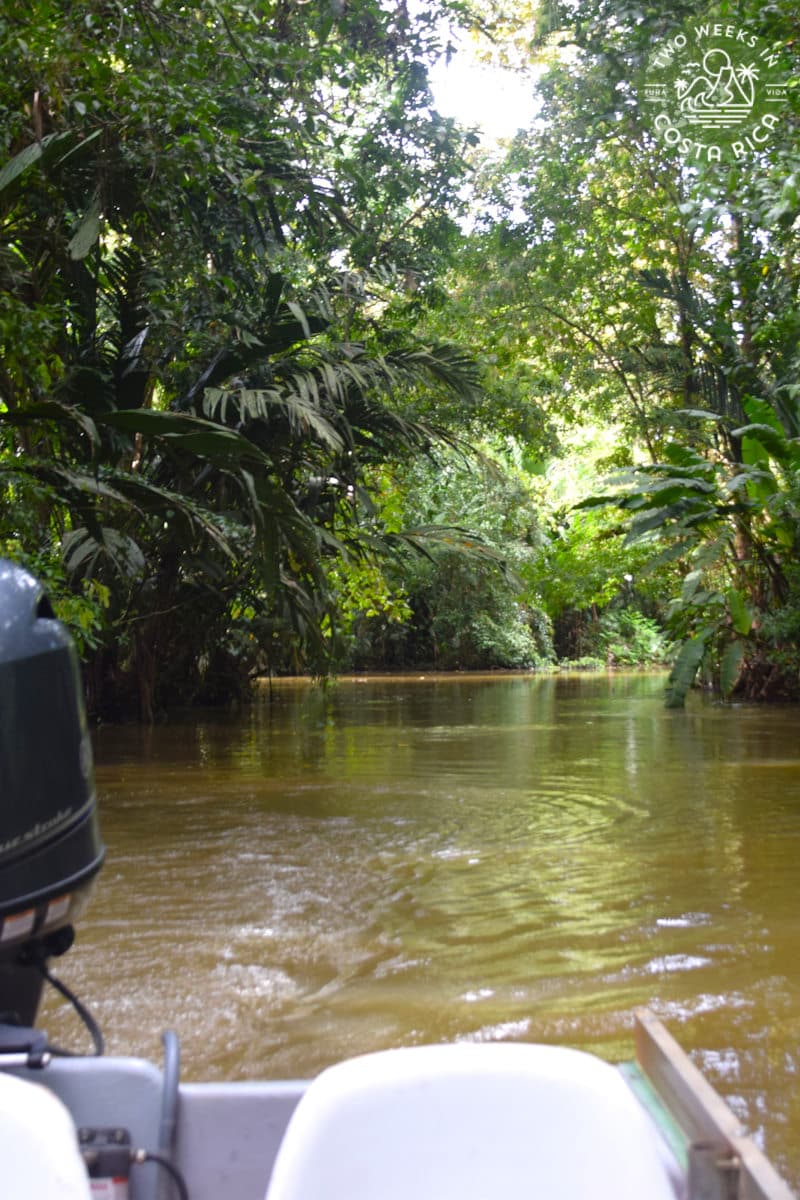
Best National Parks for Wildlife Viewing
These national parks and reserves offer the best chances to see animals and birds:
Manuel Antonio National Park: Famous for its playful monkeys and easy wildlife spotting. Sloths, iguanas, and colorful birds are regularly seen along the well-maintained trails, making it perfect for families and first-time visitors.
Cahuita National Park: Easy wildlife viewing along a rainforest-filled coastal trail. The 5.1 mile (8.3 km) trail offers the chance to spot sloths, howler monkeys, and white-faced capuchins, plus guided snorkeling opportunities at one of Costa Rica’s largest coral reefs.
Palo Verde National Park: A well-known birding destination that’s also great for seeing monkeys. These wetlands in Guanacaste are best explored by boat.
Corcovado National Park: The crown jewel for serious wildlife enthusiasts. Home to jaguars, tapirs, scarlet macaws, and all four Costa Rican monkey species in one of the world’s most biodiverse places.
Tortuguero National Park: Unique canal-based wildlife viewing by boat offers close encounters with monkeys, caimans, and an incredible variety of birds. Plus, sea turtle nesting during rainy season.
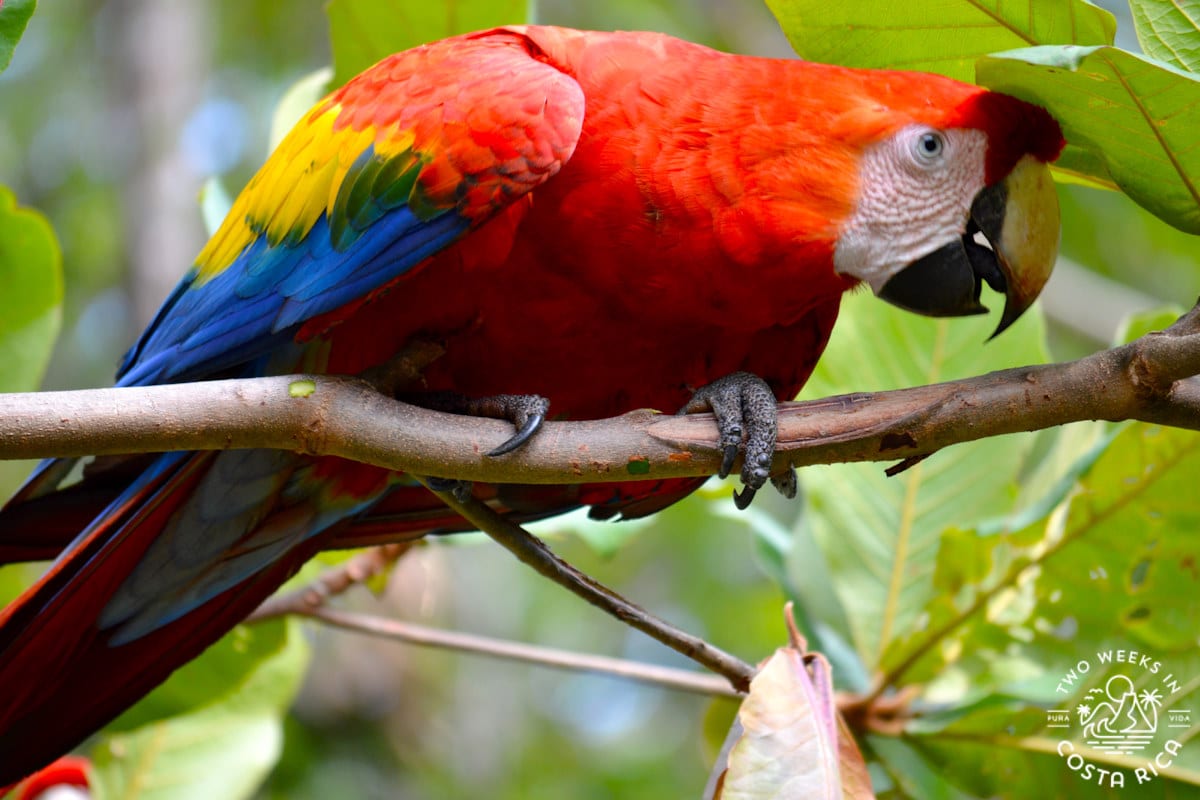
Volcano National Parks and Reserves
Costa Rica sits on the Ring of Fire, making it home to several spectacular volcanoes.
Arenal Volcano National Park: Costa Rica’s most famous volcano offers hiking trails with stunning views of the perfectly conical Arenal. While no longer actively erupting, the park takes you along some of the old lava flows.
Arenal 1968 Trail: Named after Arenal’s last major eruption, this trail also gives nice volcano views. The facility has a restaurant onsite.
Mirador El Silencio Reserve (Arenal): A private reserve with some of the most spectacular volcano views in the area. Perfect for those seeking fewer crowds and pristine forest trails.
Poas Volcano National Park: Home to one of the world’s largest active craters. The easily accessible viewing platform lets you peer into the massive crater (weather permitting).
Irazu Volcano National Park: Costa Rica’s highest volcano offers lunar-like landscapes and grand crater views (weather permitting).
Rincon de la Vieja National Park: An active volcano with interesting geothermal features like bubbling mud pots, steaming fumaroles, and acidic pools. Las Pailas Trail offers close-up views of volcanic activity, while longer trails lead to waterfalls.
Tenorio Volcano National Park: While the volcano itself is dormant, the park is famous for the stunning Rio Celeste Waterfall. The mineral-rich volcanic waters of nearby rivers create an out-of-this world blue color.
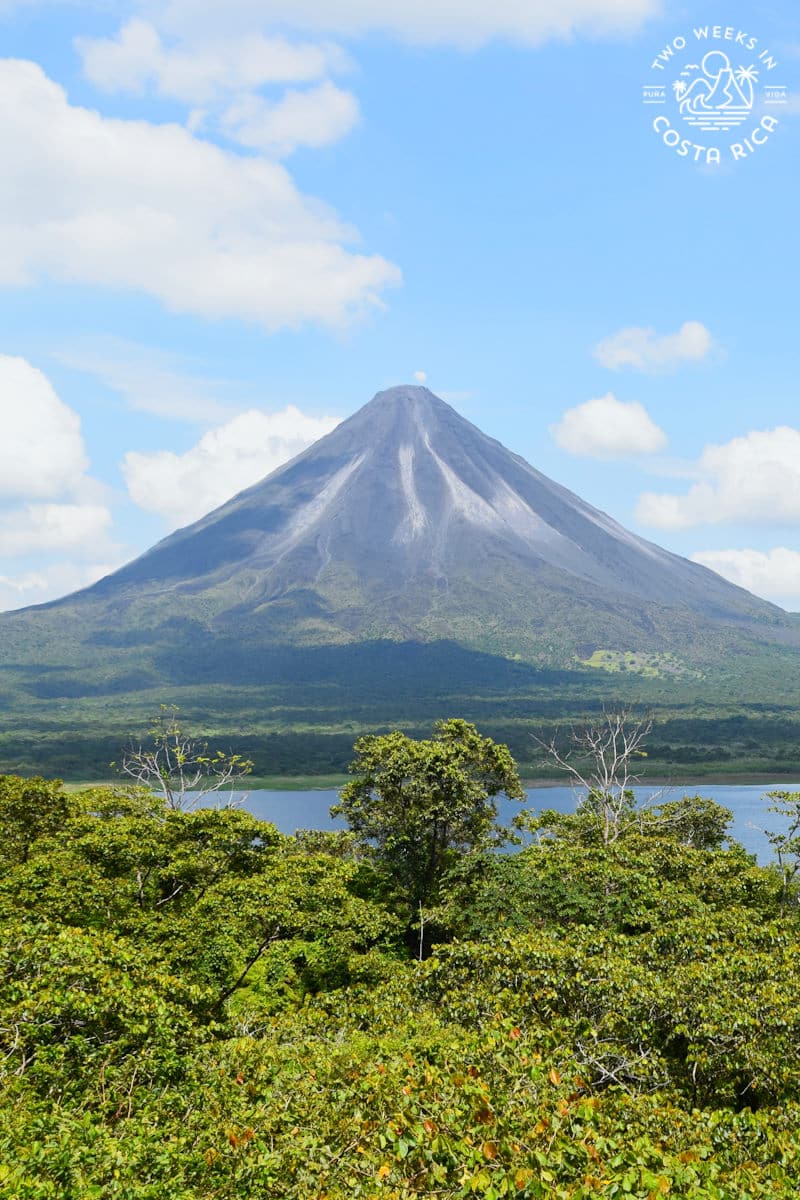
Easiest to Access National Parks
For parks that are easy to access, try these:
Manuel Antonio National Park: Just steps from hotels and restaurants, with paved pathways and clearly marked trails. Perfect for families with young children or anyone with mobility concerns.
Arenal Volcano National Park: Well-maintained, mostly flat trails, plus easy access from downtown La Fortuna.
Carara National Park: Located right off the main highway between San Jose and Jaco. Has one handicap accessible trail plus several easy to moderate paths through beautiful rainforest.
Irazu Volcano National Park: Drive almost to the crater rim, then just a short walk to the viewing area. The road is paved and fine for regular vehicles.
Poas Volcano National Park: Similar to Irazu, with easy vehicle access and a short, paved walkway to the crater viewpoint. Popular with day-trippers from San Jose.
Ecocentro Danaus: Private reserve near La Fortuna with a short trail, butterfly garden, and excellent wildlife viewing with minimal walking required.

Off-the-Beaten Path National Parks and Reserves
If you’re looking to avoid the crowds, here are some lesser visited options:
Cabo Blanco Nature Reserve: Costa Rica’s first protected area remains wild and uncrowded. Those up for the hard trek will be well-rewarded, as the trail ends at a pristine beach.
Gandoca-Manzanillo Wildlife Refuge: A remote reserve on the Caribbean coast protecting 25,910 acres (10,485 hectares) of jungle and coastline. Trails take you to scenic ocean viewpoints and secluded trails for excellent wildlife viewing.
Rincon de la Vieja National Park (Santa Maria Sector): The remote Santa Maria entrance offers camping and challenging trails to hidden waterfalls and hot springs, with virtually no other visitors.
Tapanti National Park: Hidden in the Talamanca Mountains, this lush park is known for its rushing rivers, misty trails, and incredible bird diversity in a peaceful mountain setting.
Lomas Barbudal Biological Reserve: A hidden gem in Guanacaste’s dry forest that stays lush and green year-round. This 6,538-acre (2,646-hectare) reserve attracts 250+ bee species, is great for birdwatching, and has a small but beautiful waterfall.
Madre Verde Nature Reserve: A 76-acre (31-hectare) private reserve near Palmares showcasing forest regeneration. Visited mostly by Costa Ricans on weekends.
Diria National Park: One of Costa Rica’s least visited and harder to access parks. It protects important dry forest habitat in Guanacaste Province.

Explore All Our National Park Guides by Region
Northern Zone
La Fortuna/Arenal
- Arenal Volcano National Park: Explore trails around Costa Rica’s most iconic volcano for stunning views.
- Arenal 1968 Trail: Private reserve with similar views to the national park.
- Mirador El Silencio Reserve: One of our favorite private reserves with fantastic volcano views and pristine forest trails.
- Ecocentro Danaus: Easy wildlife viewing with daytime walks, nights tours, butterfly gardens, and sloth spotting.
- Bogarin Trail: Perfect for seeing sloths, birds, and other wildlife without leaving La Fortuna.
- Cerro Chato: Dormant volcano with crater lake (official access currently closed).
Bijagua & Northern Border
- Tenorio Volcano National Park: Home to the famous Rio Celeste Waterfall and rainforest hiking.
- Cano Negro Wildlife Refuge: Remote refuge with river and lagoons. Wonderful for wildlife viewing, especially birds.
Monteverde
- Monteverde Cloud Forest Reserve: The original cloud forest reserve with an extensive trail network, including a hanging bridge.
- Curi-Cancha Reserve: Smaller, less crowded cloud forest with excellent bird and wildlife watching.
- Santa Elena Cloud Forest Reserve: Community-based private reserve offering a more intimate experience than Monteverde.
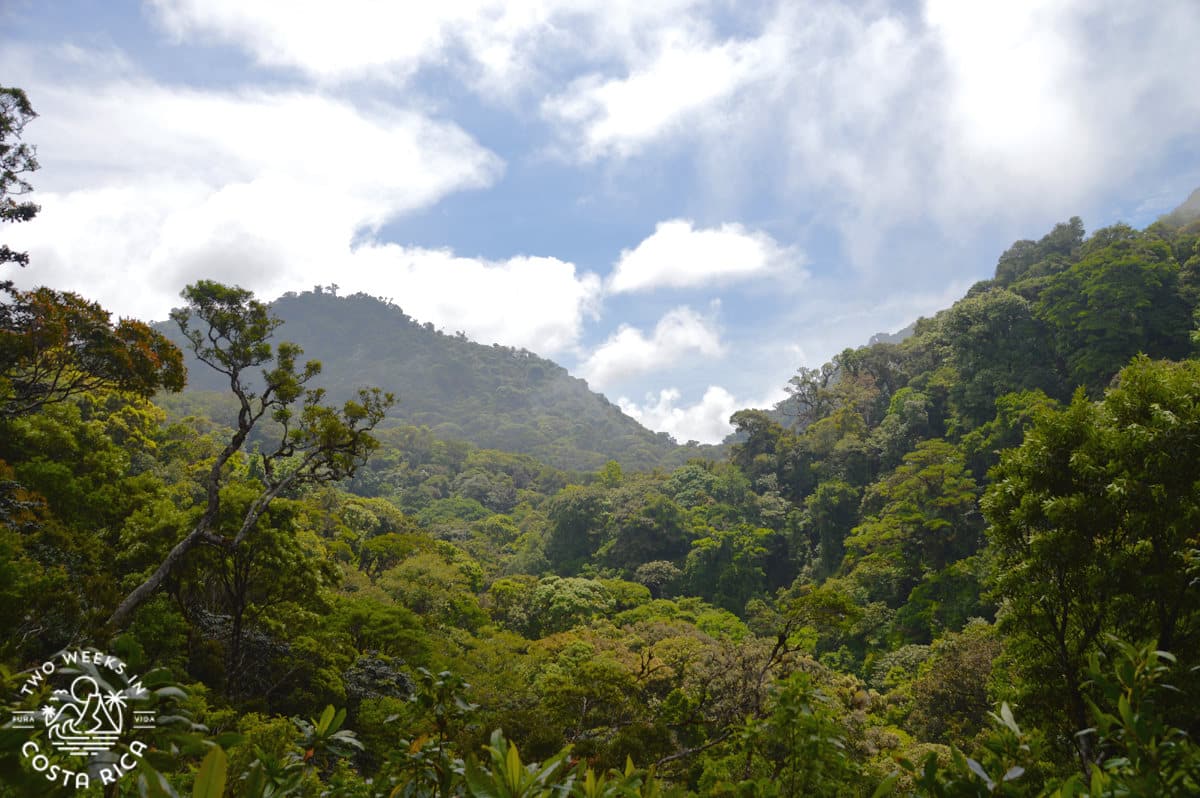
San Ramon
- Madre Verde Nature Reserve: Private reserve near San Ramon and Palmares with a nice network of trails.
Nuevo Arenal
- El Jilguero Ecotourism Project: Little-known rural tourism project on the backside of Tenorio Volcano. Rustic trails lead through cloud forest and rainforest to volcanic fumaroles (steam vents) and bubbling rivers.
Central Pacific Coast (Jaco, Manuel Antonio)
- Manuel Antonio National Park: Costa Rica’s most visited park, combining beaches, rainforest, and easy to see wildlife.
- Rainmaker Park: Private reserve with rustic suspension bridges through primary rainforest and waterfalls.
- Carara National Park: Mix of tropical dry forest and rainforest. Famous for incredible bird diversity and easy access from the highway.
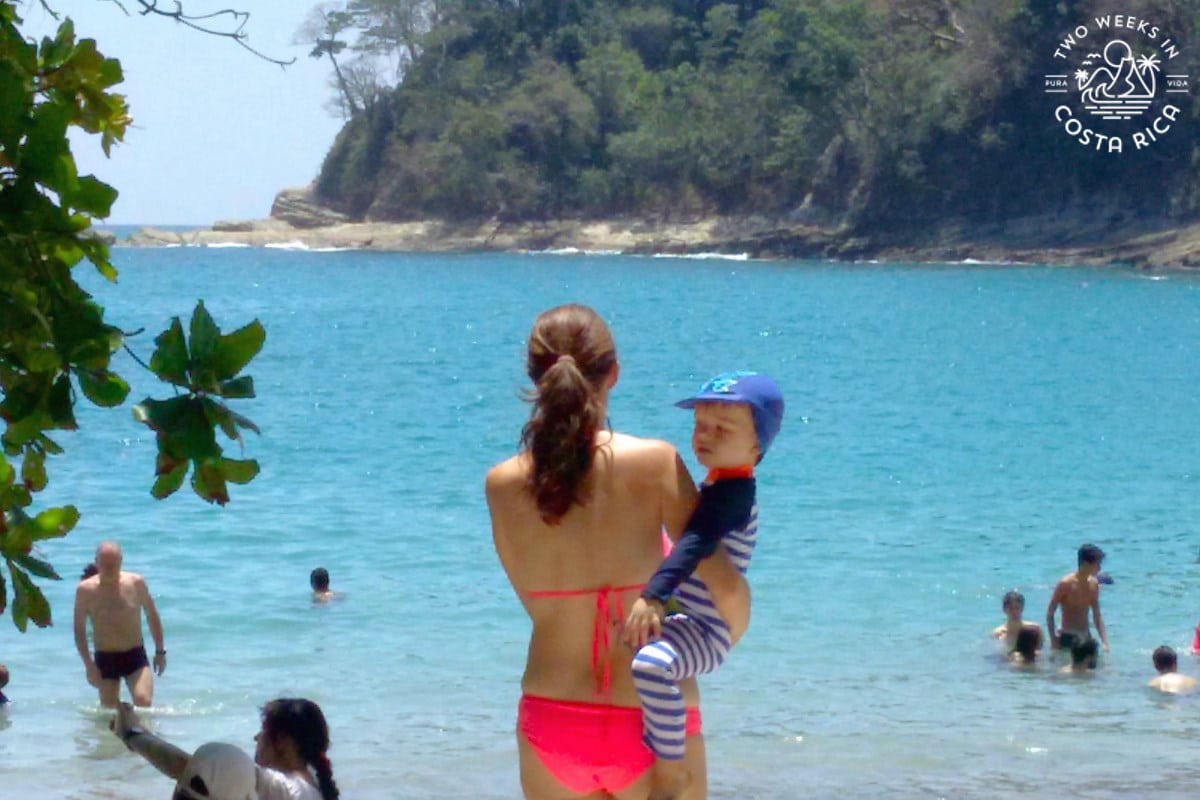
Southern Zone (Uvita, Dominical, Osa Peninsula)
- Corcovado National Park: Multiple access points, including Sirena, San Pedrillo, and El Tigre sectors.
- Marino Ballena National Park: Marine park famous for whale watching, beautiful beaches, and the unique whale-tail sandbar.
- Hacienda Baru: Private wildlife refuge with zip-line tours, hiking trails, a viewing tower, and bird watching.
Central Valley & Southern Mountains (San Jose Area, Turrialba, Orosi, San Gerardo de Dota)
- Poas Volcano National Park: Easily accessible active crater volcano with world-famous crater lake views (weather dependent).
- Irazu Volcano National Park: Costa Rica’s highest volcano (11,260 feet/3,432 meters), with cooler temps and easy access.
- Braulio Carrillo National Park: Vast rainforest park not far from San Jose, protecting important watersheds.
- Tapanti National Park: Expansive park in the mountains with a mix of cloud forest and rainforest. Beautiful, lush scenery.
- Guayabo National Monument: Costa Rica’s most significant archaeological site with ancient stone structures and trails through pre-Columbian ruins.
- Los Quetzales National Park: Cloud forest park near the small town of San Gerardo de Dota. Famous for quetzal bird sightings.
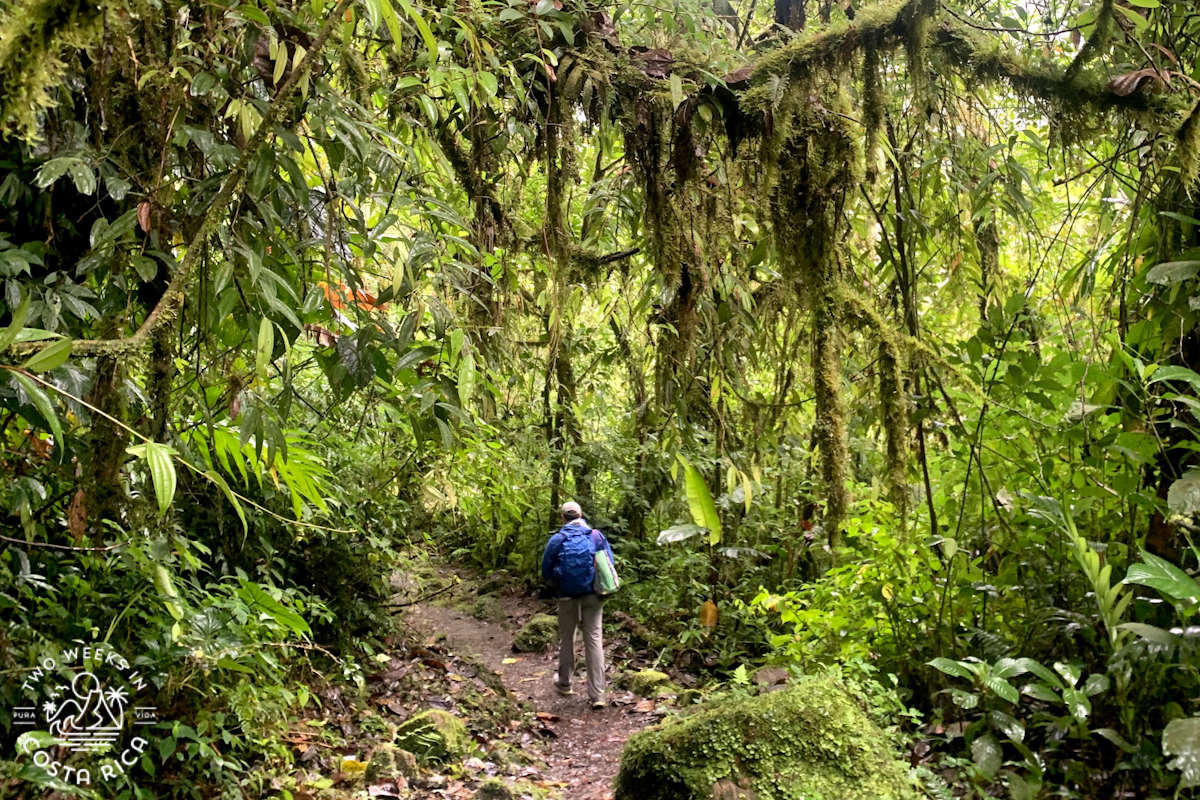
Guanacaste Province
- Palo Verde National Park: A biologically rich river and wetlands system typically explored by boat. Known for birds and monkeys.
- Rincon de la Vieja National Park: Both Las Pailas and Santa Maria sectors offer volcano hiking, hot springs, and geothermal features.
- Santa Rosa National Park: Historic park protecting important dry forest and significant battle sites from Costa Rican history.
- Lomas Barbudal Biological Reserve: Small, little-known reserve known for bees, butterflies, and dry forest ecology.
- Diria National Park: One of the least visited parks in Costa Rica, with limited infrastructure. Protects tropical dry forest between the beach and inland areas.
Nicoya Peninsula (Santa Teresa, Montezuma, Samara)
- Cabo Blanco Nature Reserve: Costa Rica’s first protected area with pristine beach and untouched dry forest on the very southern tip of the Nicoya Peninsula.
- Curu National Wildlife Refuge: Private reserve with rustic hiking trails, wildlife viewing, and beach access in a tranquil setting.
- Samara Trails/Werner Sauter Reserve: Private trails through dry forest with wildlife viewing near Samara Beach.
Caribbean Coast (Tortuguero, Cahuita, Puerto Viejo de Talamanca)
- Tortuguero National Park: Canal-based park with both the Canals Sector for boat tours and Cerro Tortuguero Sector for hiking/views.
- Cahuita National Park: Coastal park with coral reef, beach, and rainforest. Can be explored in a couple of hours or a full day on longer trails.
- Gandoca-Manzanillo Wildlife Refuge: Remote refuge protecting both marine and land ecosystems on the southern Caribbean coast.
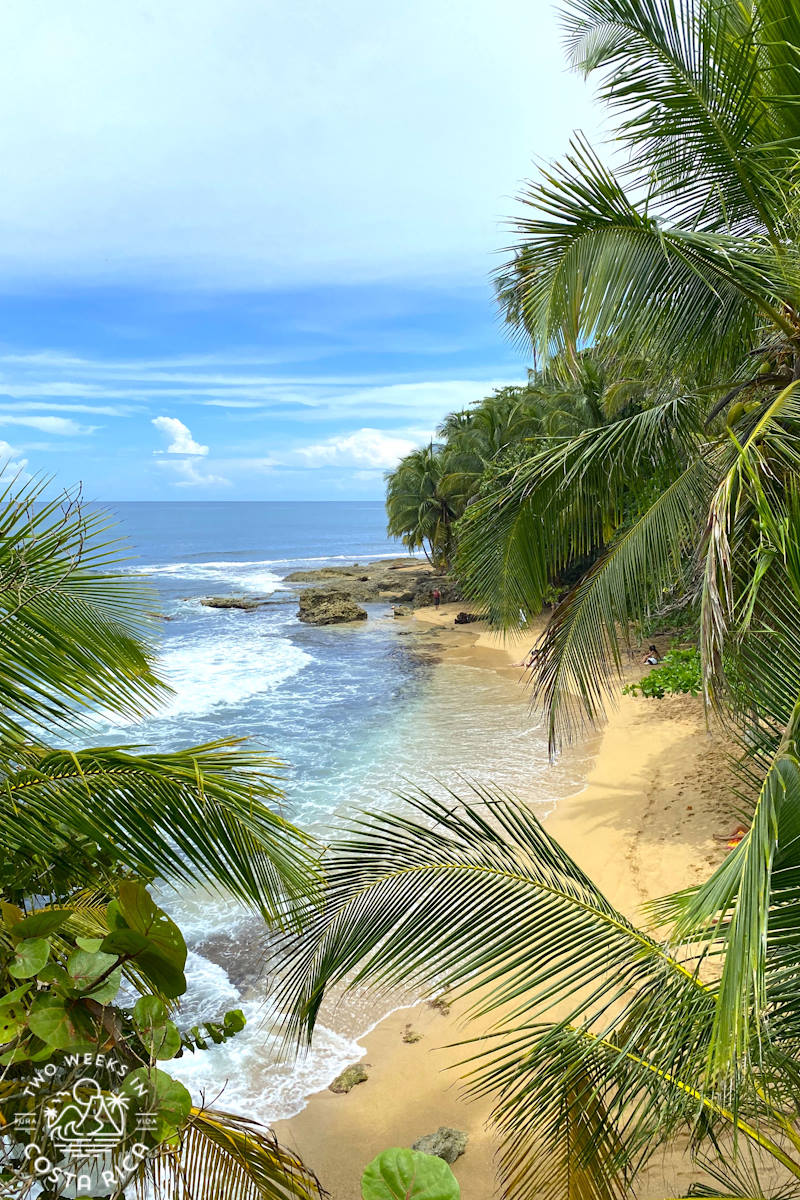
Essential Tips for Visiting National Parks in Costa Rica
Cost
Almost all national parks and reserves in Costa Rica have entrance fees. These typically range from $5-18, with discounts for kids. The money goes toward park maintenance and facilities.
Tickets
Reservations
Some national parks in Costa Rica require advanced reservations. These currently include:
- Braulio Carrillo National Park (Barva Volcano sector only)
- Carara National Park
- Chirripo National Park
- Corcovado National Park
- Irazu Volcano National Park
- Isla San Lucas National Park
- Los Quetzales National Park
- Manuel Antonio National Park
- Poas Volcano National Park
- Rincon de la Vieja National Park
- Tapanti National Park
- Tenorio Volcano National Park
- Tortuguero National Park
Tickets can be purchased directly through the Costa Rica government’s SINAC website. This is the official ticketing website and will get you the best price. You can pay with a credit card. You will need to enter your passport information.
Be sure to buy tickets in advance for these parks as they don’t sell tickets at the ranger station. We recommend saving the ticket with the bar code to your phone in case you don’t have cell phone service at the national park.
For other national parks not on the list, tickets can be purchased when you arrive by credit card.
Ticket Limits
Some national parks have limits on the number of daily visitors. This is to help reduce the impact of visitors on local wildlife.
For popular parks like Manuel Antonio National Park and Corcovado National Park, it’s best to buy your tickets well in advance so they don’t sell out. If you’re traveling during a busy time of year like Christmas, New Year’s, or Easter, this is particularly important.
Do You Need a Guide?
Most national parks and reserves in Costa Rica have well-maintained, easy-to-follow trails so you’re very unlikely to get lost.
Nature guides add value by helping you appreciate what you’re seeing along the trail. Parks and reserves typically don’t have any information, so it can be nice to have a local guide with you to explain about a volcano’s history of eruptions, the ecology of the cloud forest, etc.
If you want to see wildlife, guides are a must. We always recommend doing at least one guided wildlife tour during your trip to see the most. Guides know where to look for birds and animals and can spot more with their trained eyes. Plus, they have powerful scopes that can let you see wildlife that’s high up in a tree (e.g., sloths).
Here’s a link to our post on Naturalist Guides in Costa Rica with more information.
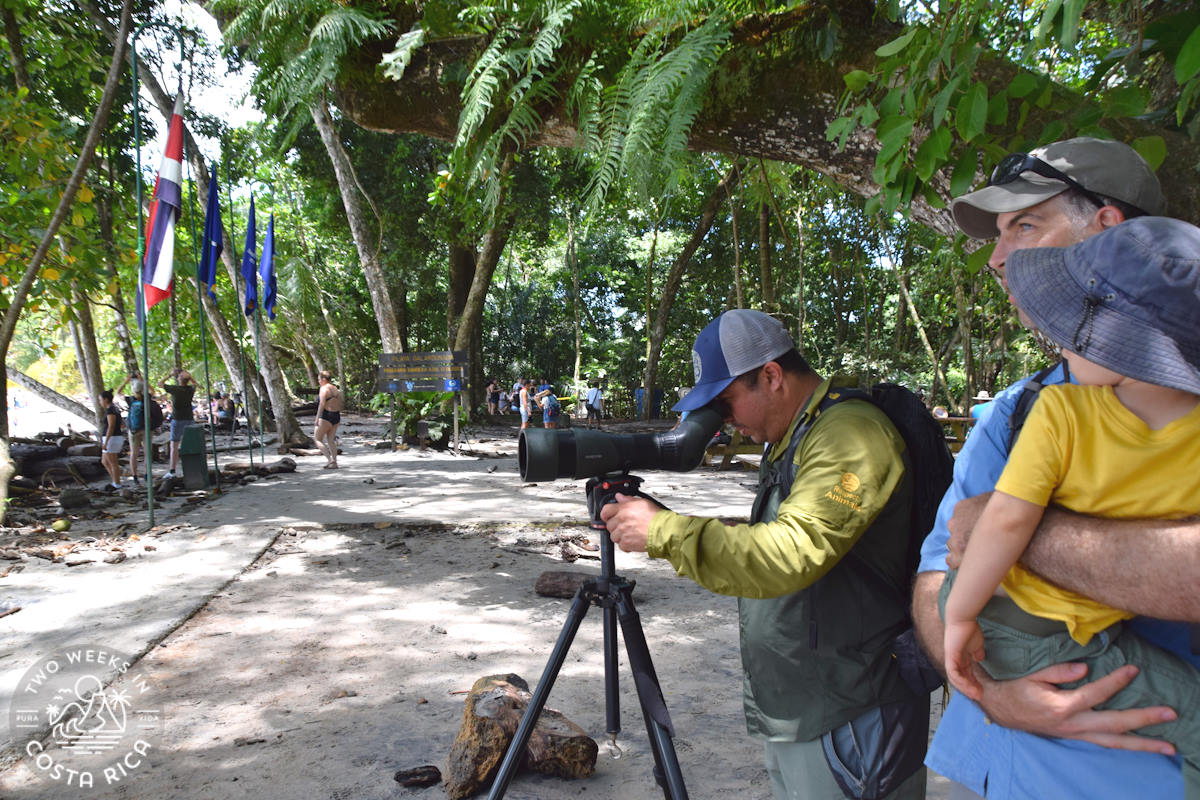
What to Bring/Wear
Although what you will need for a national park will vary by park and season, here are the essentials for most hikes:
Closed-toe hiking shoes: These are best due to uneven terrain and biting insects. Sneakers are enough for most popular hikes, but if you’re planning on more difficult treks (e.g., Corcovado National Park), opt for hiking boots. If you’re traveling during rainy season (May through November), expect your shoes to get wet. Some people bring more than one pair since they can take some time to dry in the humidity.
Lightweight clothing: Quick-dry clothing or lightweight cotton is best.
Lightweight pants: If you’re prone to mosquito bites, lightweight hiking pants can be a great option. Shorts are fine too; you will probably just need to wear repellent.
Lightweight rain jacket: For travel during rainy season or if you’re visiting a rainy area like the Osa Peninsula. The weather in the cloud forest can change quickly too.
Sun protection: Hat and sunscreen
Insect repellent: Especially for the wet months (May through November)
Reusable water bottle: All national parks now ban single-use plastics, and some reserves also discourage them.
Snacks: Most national parks don’t have food available. Note that food is banned in some parks, like Manuel Antonio National Park.
Small day pack: To carry your essentials
For more information, including the specific repellents and sunscreens we recommend, read our posts Packing for Costa Rica and Day Pack Essentials for Costa Rica.
More Things to Do
Costa Rica offers tons of adventures beyond national parks. Explore our Things to Do articles for 150+ activities all across the country. We cover everything from waterfalls and hanging bridges to the best hot springs.
National Park Tours We Recommend
Here are some national park tours that we have done ourselves and can help you book. Booking through us costs the same (or sometimes less) and helps support our website! Learn more about our Travel Agency.
-
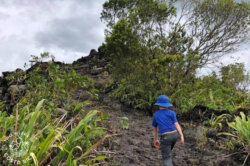
Arenal Volcano – El Silencio Trail (Group Tour) – From La Fortuna
Rated 4.50 out of 5Price: From: $61.00 +VAT Select options -
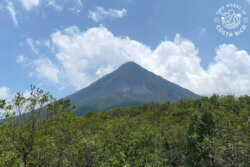
Arenal Volcano National Park (Group Tour) – From La Fortuna
Price: From: $80.00 +VAT Select options -
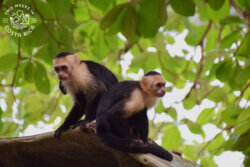
Manuel Antonio National Park (Group Tour)
Rated 4.80 out of 5Price: From: $53.00 +VAT Select options -
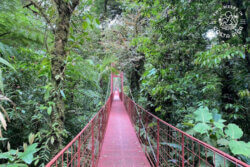
Monteverde Cloud Forest Reserve (Group Tour)
Rated 5.00 out of 5Price: From: $40.00 +VAT Select options -
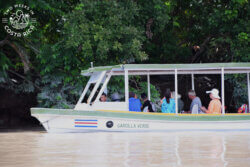
Palo Verde Boat Tour: Wildlife & Culture (from Guanacaste)
Rated 5.00 out of 5Price: From: $126.00 +VAT Select options -
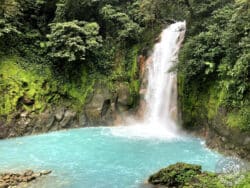
Rio Celeste Waterfall Hike (Group Tour) – From Bijagua
Price: From: $55.00 +VAT Select options -
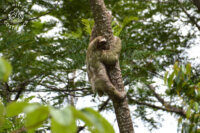
Sloth and Bird Trail (Group Tour) – From La Fortuna
Rated 5.00 out of 5Price: From: $74.00 +VAT Select options -
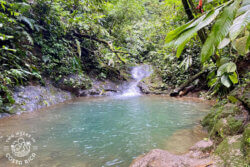
Ultimate Jungle Hike – From La Fortuna
Rated 5.00 out of 5Price: From: $85.00 +VAT Select options